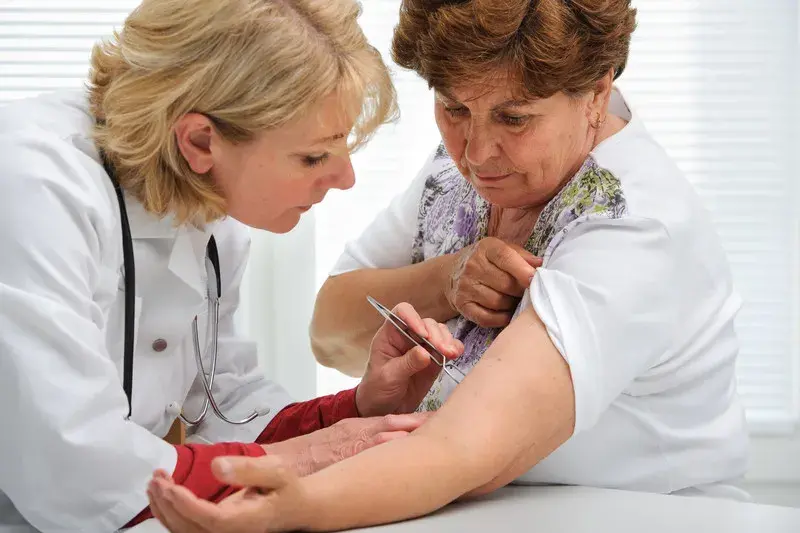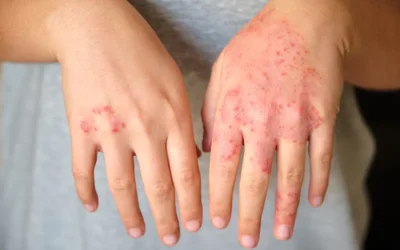Fun-filled outdoor activities in summer can also bring certain perils. From insect bites to sunburn to dehydration and fractures, physicians’ practices and their medical coding companies need to be ready to code for a host of summer ailments. Here we discuss the ICD-10 codes for five common summer-related complaints: bug bites, Lyme disease, recreational water illnesses (RWIs), poison ivy rash, and sun burn.
- Bug bites: Warm weather promotes breeding of mosquitoes and ticks leading to faster spread of various diseases. According to a recent New York Times report, the number of people getting diseases transmitted by mosquito, tick and flea bites has more than tripled in the United States in recent years. ICD-10 Chapter 19 contains the codes for Injury, poisoning and certain other consequences of external causes (S00-T98). To report a bug bite, the first code on the claim form should be an S code which indicates the location of the bite. As ICD-10 does not provide a combination code for indicating insect bites to multiple sites, separate codes should be reported for each affected body site with the seventh character added to describe the particular encounter. Examples:
- S00.262A Insect bite (nonvenomous) of left eyelid and periocular area, initial encounter
- S30.860A Insect bite (nonvenomous) of lower back and pelvis, initial encounter
- S30.861A insect bite of the abdomen, initial encounter
- S70.362A Insect bite (nonvenomous), left thigh, initial encounter
- S50.861A Insect bite of right forearm, initial encounter
Code W57.XXX- (A, D, or S), bitten or stung by nonvenomous insect and other nonvenomous arthropods, is an external cause code used to describe the cause of an injury or other health condition. According to ICD-10 guidelines, no external cause code from Chapter 20 is needed if the external cause and intent are included in a code from another chapter. Since a code for an insect bite would indicate the cause of injury and as intent is not applicable, a code from category W57 does not have to be reported in conjunction with codes for insect bites. A code from category W57 may be reported if an insect bite results in a complication such as a localized infection that requires treatment.
- Lyme Disease: According to the C.D.C., about 300,000 Americans get Lyme disease each year, but only about 35,000 diagnoses are reported. Americans living in wooded surburbsnear deer are at risk for Lyme disease. Deer carry the tick causing this bacterial disease. The symptoms of Lyme disease may involve multiple systems such as the skin, joints, and nervous system. Common signs and symptoms include a rash at the site of the tick bite, symptoms such as fever, chills, fatigue, headache, and body ache, joint pain, and in severe cases, neurological problems such as meningitis, Bell’s palsy, numbness or weakness in extremities, and impaired muscle movement. The ICD-10 code for Lyme disease is:
-
- A69.20 Lyme disease unspecified
For reporting Lyme disease, an article in For the Record recommends choosing the subdivision code that most accurately describes the patient’s symptoms. For example:
-
- A69.21 Meningitis due to Lyme disease
- A69.22 Other neurologic disorders in Lyme disease (Cranila neuritis, meningoencephalitis, polyneuropathy)
- A69.23 Arthritis due to Lyme disease
- A69.29 Other conditions associated with Lyme disease
- Recreational water illnesses (RWIs) – Swimmers are prone to diseases spread through water such as Norovirus, E. Coli, Giardia, and Crypto. These diseases are caused by coming into contact with contaminated water in swimming pools, hot tubs, water parks, water play areas, interactive fountains, lakes, rivers, or oceans. Swimming can also cause swimmer’s ear, a type of painful ear infection. RWIs Chemicals in the water or chemicals that evaporate from the water and cause indoor air quality problems can also cause RWIs.
- Norovirusis a major cause of acute gastroenteritis and can lead to the sudden onset of severe vomiting and diarrhea. This highly contagious virus is commonly spread through contaminated food or water or close contact with an infected person. It can cause diarrhea, abdominal pain and vomiting 12 to 48 hours after exposure.
Norovirus is classified to ICD-10 code A08.1, Acute gastroenteropathy due to Norwalk agent. - E.coli is a type of bacteria present in the intestines of people and animals. While most strains of E.coli are not harmful, some types can cause illness such as diarrhea, abdominal pain, fever, and sometimes vomiting. Severe infection can cause bloody diarrhea, dehydration, or even kidney failure. The ICD-10 code for E.coli is:
- B96.20 Unspecified Escherichia coli [E. coli] as the cause of diseases classified elsewhere
- Giardia, another intestinal infection, causes abdominal cramps, bloating, nausea and bouts of watery diarrhea. Though the infections usually resolve in few weeks, intestinal problems may persist even after the parasites are gone. The ICD-10 code is: A07.1: Giardiasis [lambliasis]
- Cryptosporidiosis or Crypto is caused by cryptosporidium, a microscopic parasite that causes a diarrheal disease. Other symptoms include stomach cramps or pain, dehydration, nausea, vomiting, fever, and weight loss. On the other hand, some people with Crypto will have no symptoms at all. Those with weakened immune systems may develop serious, chronic, and sometimes fatal illness. The ICD-10 code is: A07.2 Cryptosporidiosis
- Norovirusis a major cause of acute gastroenteritis and can lead to the sudden onset of severe vomiting and diarrhea. This highly contagious virus is commonly spread through contaminated food or water or close contact with an infected person. It can cause diarrhea, abdominal pain and vomiting 12 to 48 hours after exposure.
- Poison ivy, oak and sumac: A recent Kaiser Health News report calls poison ivy ‘a familiar stranger’ that could ruin your summer. It is difficult to avoid poison ivy when you are on a hike or camping in the woods as the plant is can take many different forms in different environments, presenting as a vine or shrub. Symptoms of poison ivy rash include redness, itching, swelling, and blisters. The rash usually appearst eight to 48 hours after the contact, but can as early as five hours or as late as five days after exposure to the plant.
Inhaling smoke from a burning plant can cause breathing difficulties. Contact with oak and sumac can also cause rashes. The relevant ICD-10 code is:L23.7 Allergic contact dermatitis due to plants, except food - Sunburn: Prolonged exposure to the sun causes the skin to burn, turn red and become irritated. Common signs and symptoms of sunburn include redness, swelling, blisters, pain and tenderness, and even flu like symptoms such as chills, nausea, headache and weakness. ICD-10 allows complete coding based on the severity of the burn. Damage to the skin as a result of overexposure to the natural sun is reported using the following ICD-10 codes:
- L55.0, sunburn first-degree sunburn
- L55.1, sunburn of second degree
- L55.2, sunburn of third degree
- L55.9, sunburn unspecified
If the condition is diagnosed as severe photoallergic or phototoxic response to the sun, which could be an effect of solar radiation, it is reported with one of the following codes:
- L56.0, drug phototoxic response
- L56.1, drug photoallergic response
- L56.2, photocontact dermatitis (berloque dermatitis)
- L56.3, solar urticaria
If a certain medication has caused the patient to develop sun sensitivity, an external cause code should be used to report the specific drug that caused this situation.
This list of summer ailments is not exhaustive and includes only the most common ones. According to the new Vital Signs report published by the CDC, vector-borne diseases (diseases transmitted by blood-feeding ticks), which are common in summer, have more than tripled nationwide, rising from 27,388 cases in 2004 to a whopping 96,075 cases reported in 2016. As physicians focus on diagnosis and treatment of these and other summer-time illnesses, outsourcing medical coding is a practical option to report them correctly.




